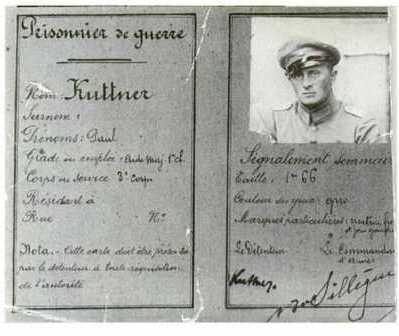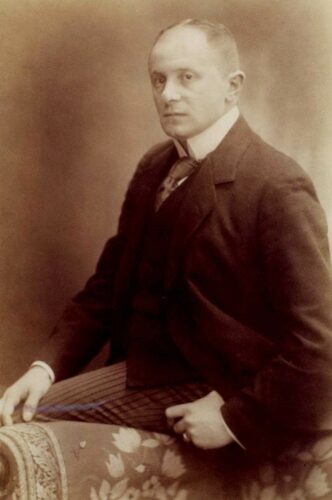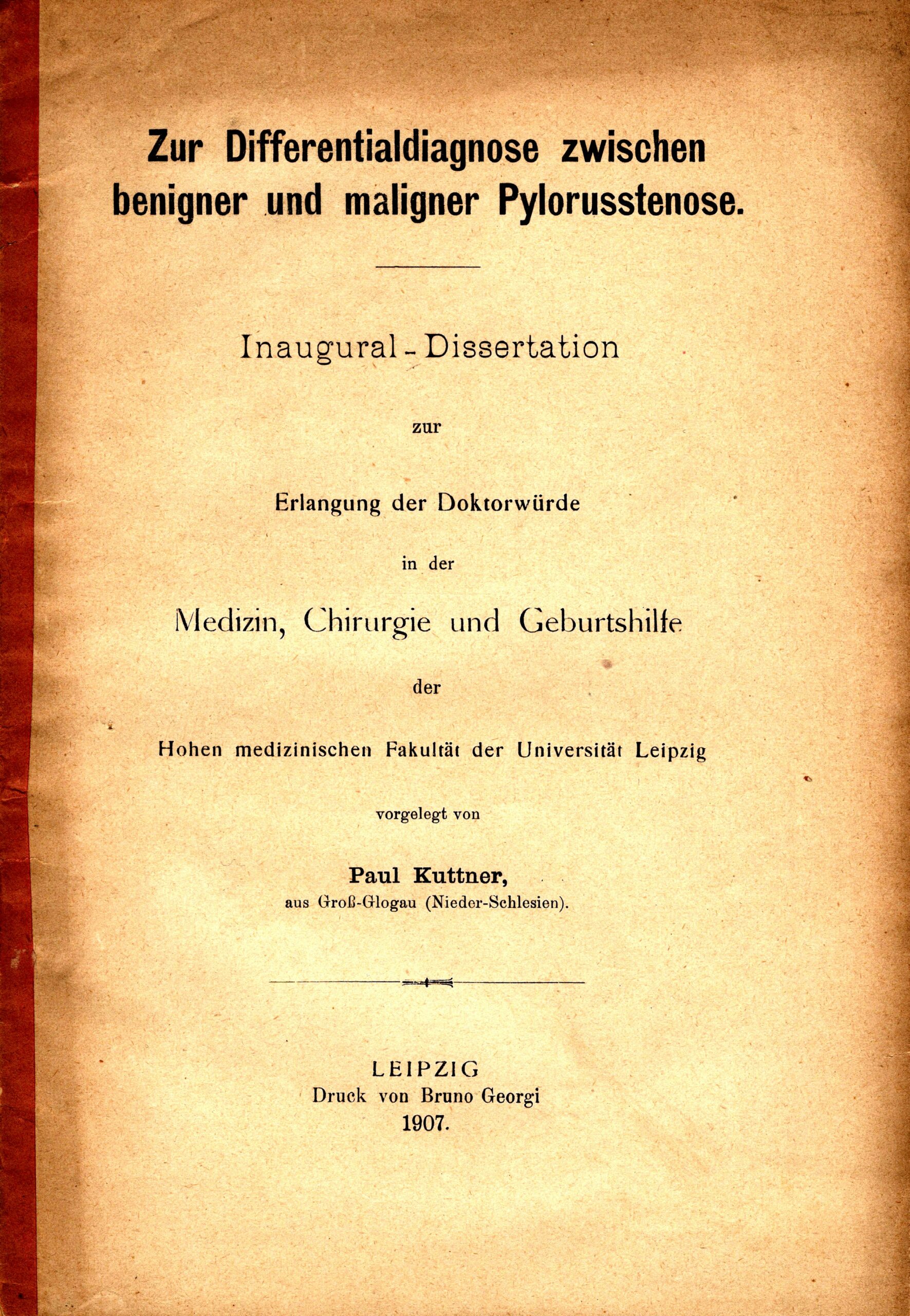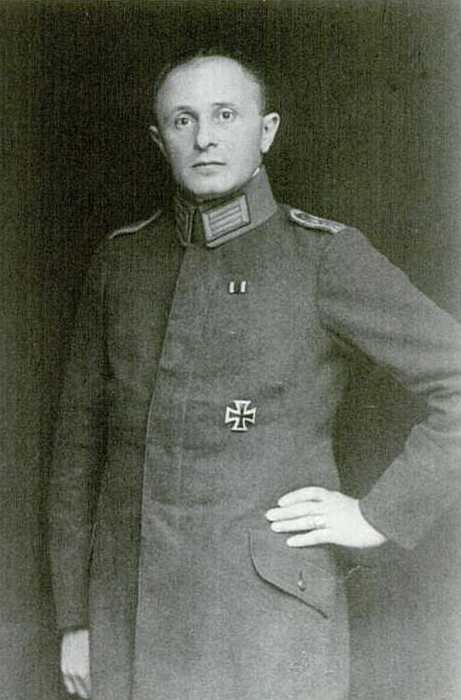Dr. med. Paul Kuttner
- Glogau/Głogów, Lower Silesia, Poland , 13.01.1878
- Theresienstadt/Terezín ghetto, Czech Republic, 18.10.1943
- Member since 1926
- Deported in 1942
- Berlin
- Specialist in internal medicine
Paul Kuttner was born in Glogau/Głogów in former Lower Silesia in 1878 as the son of the merchant Albert Kuttner and his wife Agnes, née Wolff.
Education and Places of Work
Paul Kuttner first attended secondary school and for a short time the Royal Catholic Grammar School in his birthplace. He moved to Berlin to attend the Askanisches Gymnasium in October 1889. He studied medicine in Berlin and Munich from April 1899 and graduated in 1905. He worked as a medical trainee at the Berlin Municipal Hospital am Urban. Kuttner received his licence to practise medicine in 1906, and completed his doctorate the following year at the University of Leipzig with the thesis “Zur Differentialdiagnose zwischen benigner und maligner Pylorusstenose”. He took up his training in internal medicine at the Medical Clinic of the Rudolf Virchow Hospital in Berlin under Alfred Goldscheider in 1907 and later moved to the Charité and the Berlin-Westend Hospital.
Kuttner actively participated in the First World War in France from 1914 as a medical officer with honours. He was a prisoner of war in France from 1917 to 1919.
He had been working as a registered doctor for internal medicine from 1919, practising at Regensburger Strasse 14 in Berlin. He ran his own practice at Kurfürstendamm 72 from 1927. He also worked as an independent medical examiner at the UFA film studios in Neubabelsberg from 1921 to 1933.
1933
Because of the “Frontkämpferprivileg” (“front fighter privilege”: NS-terminology for those who had actively participated in World War I), Paul Kuttner was briefly able to obtain a health insurance licence. This privilege was withdrawn in 1935, with his material situation thus deteriorating. UFA had already dismissed him in 1933.
Kuttner fell seriously ill with a right-sided hemiparesis as a result of a stroke in 1936. From then on he was dependent on help and unable to work. The GESTAPO forced Kuttner’s “Aryan” wife to divorce him in July 1941. Kuttner himself was baptised as a Protestant in 1911. Paul Kuttner was taken to the infirmary of the former Jewish hospital in Berlin’s Auguststrasse upon orders of the Nazi authorities.
Deportation to the Theresienstadt/Terezín ghetto in 1942
Paul Kuttner was deported from Berlin to the Theresienstadt/Terezín ghetto on 16 December 1942 (Transport I/81, No. 10102). At the ghetto, he was accommodated at the infirmary at Langestrasse 11 (E IIIa). Paul Kuttner died at the ghetto on 18 October 1943.
Kuttner got divorced from his first wife, Margarete Fraenkel in 1927. She was the daughter of the Hamburg pathologist Eugen Fraenkel, discoverer of the gas gangrene pathogen Welch-Fraenkel bacillus. She was deported to Auschwitz and murdered in February 1943 at the age of 59. Their son Paul Kuttner was able to reach England in 1938 at the age of 16, and later emigrated to the USA. Their daughter Annemarie survived the Holocaust by having gone into hiding in Berlin.
Sources and Further Reading
Sources


